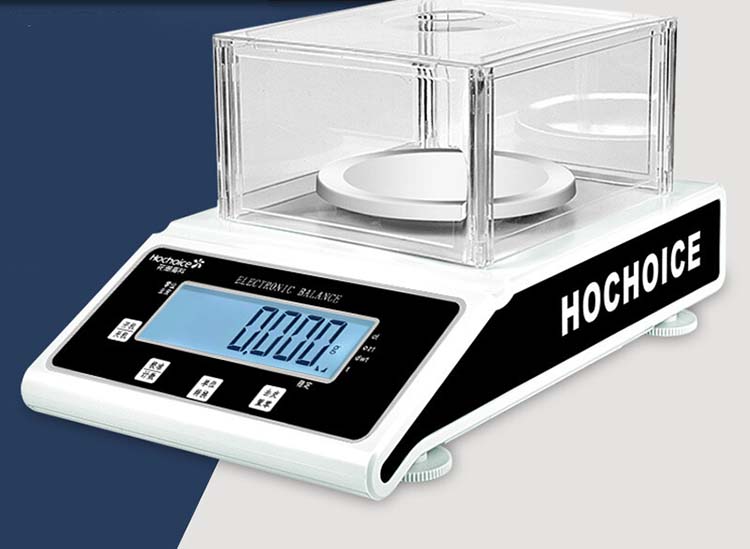How to Calibrate an Electronic Balance: Key Steps to Ensure Accurate Measurements
An electronic balance is an essential tool in laboratories, industrial production, and even daily life. Whether it’s for precise chemical analysis, pharmaceutical compounding, or simple object weighing, the accuracy of an electronic balance is crucial. However, with frequent use, an electronic balance may experience deviations or inaccuracies, which is why regular calibration is necessary to maintain its precision. This article will guide you on how to calibrate an electronic balance and provide practical tips to help users ensure the long-term stability and accuracy of their equipment.

What is Electronic Balance Calibration?
Electronic balance calibration refers to adjusting the balance using standard weights with known mass to ensure the displayed measurements match the actual weight. Calibration helps correct any errors that might accumulate during use and ensures the accuracy of the device. Regular calibration is vital to maintaining the performance of an electronic balance, especially in applications requiring high precision.
Basic Steps for Calibrating an Electronic Balance
1. Choose the Appropriate Calibration Weights
When calibrating an electronic balance, the weights used must have a known and certified mass. The type of weights needed depends on the precision required by the balance. For high-precision balances, it is recommended to use high-quality standard weights to ensure the most accurate calibration.
2. Clean the Balance and Weights
Before calibration, ensure both the electronic balance and the calibration weights are clean. Dust, oils, or other contaminants can affect measurement accuracy. Use a lint-free cloth to gently wipe the surfaces, being careful not to scratch the balance.
3. Warm Up the Balance
Turn on the electronic balance and allow it to warm up for 10 to 15 minutes. This helps stabilize the internal electronics and minimizes errors caused by temperature fluctuations.
4. Perform Zero Calibration
Ensure the balance reads zero when no objects are placed on the weighing platform. If the reading is not zero, press the “zero” or “tare” button to reset it. Many modern electronic balances have automatic zero calibration features to establish an accurate baseline.
5. Perform the Calibration
Select the appropriate calibration mode on the balance (such as single-point or multi-point calibration), depending on the model. Place each standard weight one by one onto the balance’s weighing platform. After each placement, the balance will automatically adjust the displayed reading. Ensure that each calibration is done precisely and without error.
6. Verify the Results
After calibration, measure using the weights again to verify the accuracy of the balance. If the measurements are consistent, the calibration was successful. If the measurements vary, recalibrate or check if there’s a malfunction with the balance.
7. Record Calibration Results
For long-term stability, it’s a good practice to record the results of each calibration and keep the data for future reference. Regularly reviewing calibration records helps detect potential issues early, enabling timely corrections or repairs.
Calibration Frequency for Electronic Balances
The frequency of calibration for an electronic balance typically depends on its usage environment and required precision. Here are some general guidelines:
Laboratory Use: If the balance is used for high-precision tasks, such as chemical analysis or pharmaceutical research, it should be calibrated monthly.
General Use: For regular, everyday weighing, calibration can be done quarterly.
Frequent Use: If the balance is used multiple times a day or in environments with fluctuating conditions, calibration might need to be done weekly or biweekly.
Common Issues with Electronic Balances and Troubleshooting
Unstable Readings
This could be caused by an uneven surface, temperature fluctuations, or vibration. Ensure that the balance is placed on a stable, level surface and avoid exposing it to air drafts or vibrations.Unable to Calibrate
If the balance cannot be calibrated with standard weights, it may have an internal malfunction. In this case, it’s advisable to contact a professional technician for inspection.Significant Display Deviation
If the balance shows large deviations even after calibration, it may indicate a malfunction in the sensors or internal electronics. It is important to check and repair the balance to restore its accuracy.
Why Choose Electronic Balances from Shanghai Hochoice Apparatus Manufacturer Co., Ltd.?
Shanghai Hochoice Apparatus Manufacturer Co., Ltd. specializes in the research and manufacturing of electronic balances, platform scales, height and weight scales, baby scales, kitchen scales, and other weighing instruments. Our electronic balances are not only precise and stable but also come equipped with easy-to-use calibration features, helping users ensure measurement accuracy with minimal effort. Our products are widely used in laboratories, industrial settings, and for home use, and have been well-received by customers both domestically and internationally.
We offer a wide range of electronic balances suitable for different needs, from high-precision laboratory balances to everyday kitchen scales. In addition, Hochoice’s customer service team provides expert support to ensure your equipment runs smoothly over the long term.
Conclusion
The accuracy of an electronic balance directly affects the reliability of measurement results, and regular calibration is an effective way to ensure its precision. By following the correct calibration steps, you can prolong the life of your balance, minimize errors, and ensure consistent measurement results. If you have any questions about selecting, calibrating, or servicing electronic balances, please feel free to contact Shanghai Hochoice Apparatus Manufacturer Co., Ltd., and we will provide you with professional product and service support.


